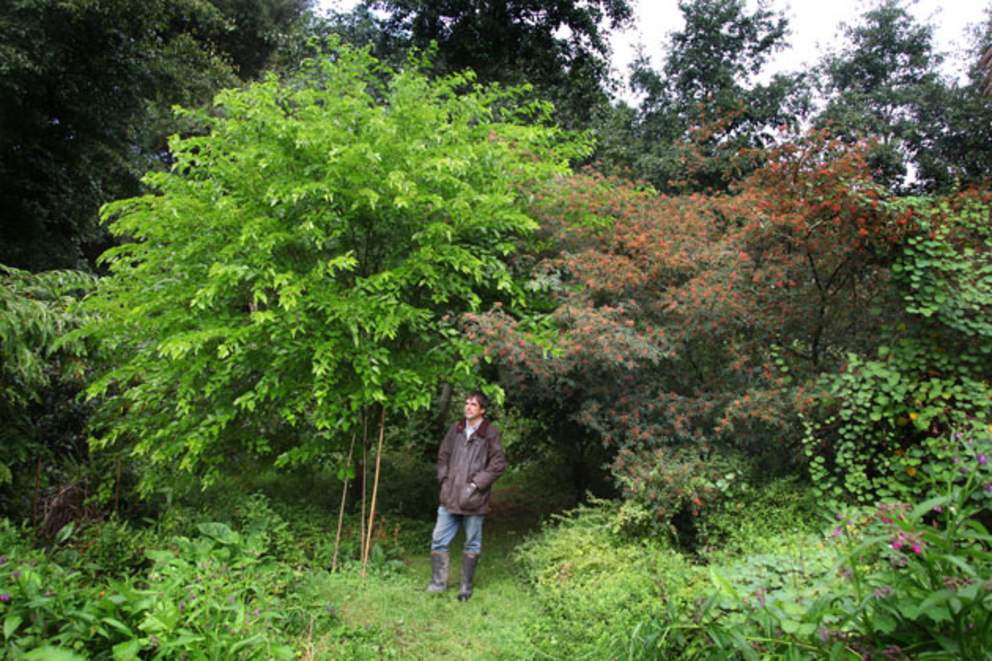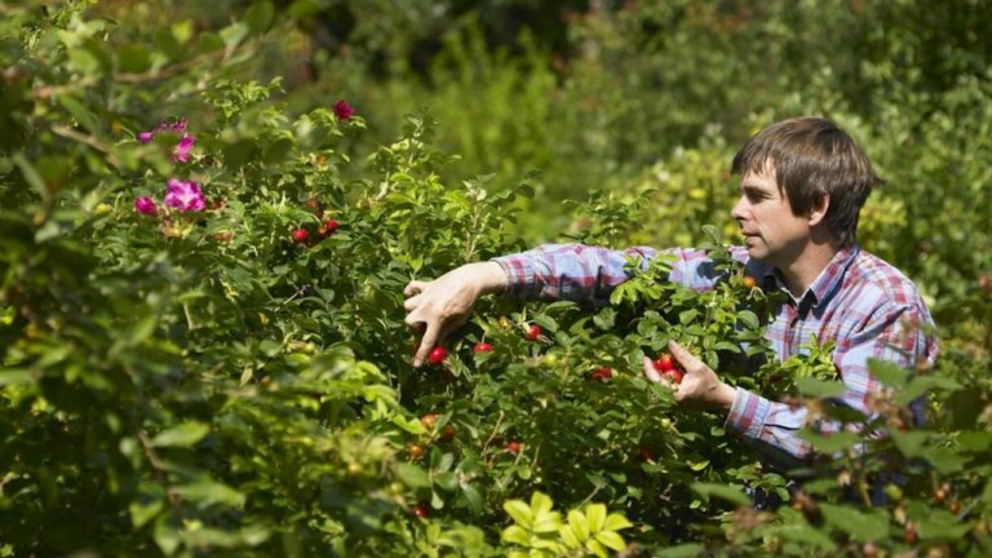Forest garden with 500 edible plants requires only a few hours of work per month
This man’s forest garden produces tons of food, while practically tending itself!
Historically, farms and forests have been at odds. Conventional wisdom says we have to cut down the forest to make way for agriculture.
But a growing movement called agro-forestry “capitalizes” on the free services forests provide farmers and gardeners.

Not only do trees protect more delicate edible plants from the elements and extreme weather, they provide nutrients, water, pest control and pollination services.
Although you might not find all your traditional annual veggies in a forest garden, you will discover hundreds of new varieties of edible plants you never knew existed, that are often more nutrient-dense and flavorful.
And if you choose your plants carefully, they will propagate themselves each year and live symbiotically among the hundreds of diverse species around them, requiring no tilling, planting, fertilizing, weeding or watering.
This is what Martin Crawford has done in his 2-acre forest garden in England for over 20 years — let it do the work for him for the most part, after a few years of research and legwork.

While the initial planting of the forest required years of research and watering, Crawford now has over 500 varieties of food growing wild in his garden, which requires very little work other than plucking and eating the fruits of his “labor.”
From time to time, he adds a new exotic species to his garden or stomps on some overgrown cow parsley to give other herbs a chance to catch up, but for the most part, he’s “playing and tinkering” in his garden, rather than doing anything that resembles work.
In his book Creating a Forest Garden, he describes how a complete garden should include 7 layers:
1. Tall trees
2. Smaller trees
3. Shrubs
4. Perrenials
5. Groundcover
6. Root crops
7. Climbing vines
It includes directly useful plants like fruit trees, nuts, tubers, vegetables, medicinal herbs, timber. It also includes indirectly useful plants that help the system function better like nitrogen fixers, mineral accumulators, plants that attract beneficial insects that eat pests.
Because almost all of the plants are perennial, there’s no need to “dig the soil.”
“Not digging the soil is really important in terms of sustainability because every time you dig the soil, a load of carbon goes into the air,” Martin says in the video below:
Additionally, digging or tilling the soil to plant annual crops, releases nutrients, and kills bacteria, fungi and other microorganisms that keep the soil alive by exposing them to the sun.
The soil in a forest garden is extra rich because the deep tree roots breakdown minerals deep in the subsoil and bring the nutrients up to the topsoil. They also drop leaves, which act as a natural compost.
Also, the canopy layer of the trees keeps moisture from evaporating out of the garden, so that as your forest grows denser you will have to do less and less watering. When forests grow big enough, they create their own rainfall, eliminating the need for irrigation altogether.
And… Crawford notes, the forest attracts wild game, so if you’re into meat, you don’t have to raise it, you can just shoot it.
So, in short, don’t clear the forest to start a farm, let the forest grow your food for you.

